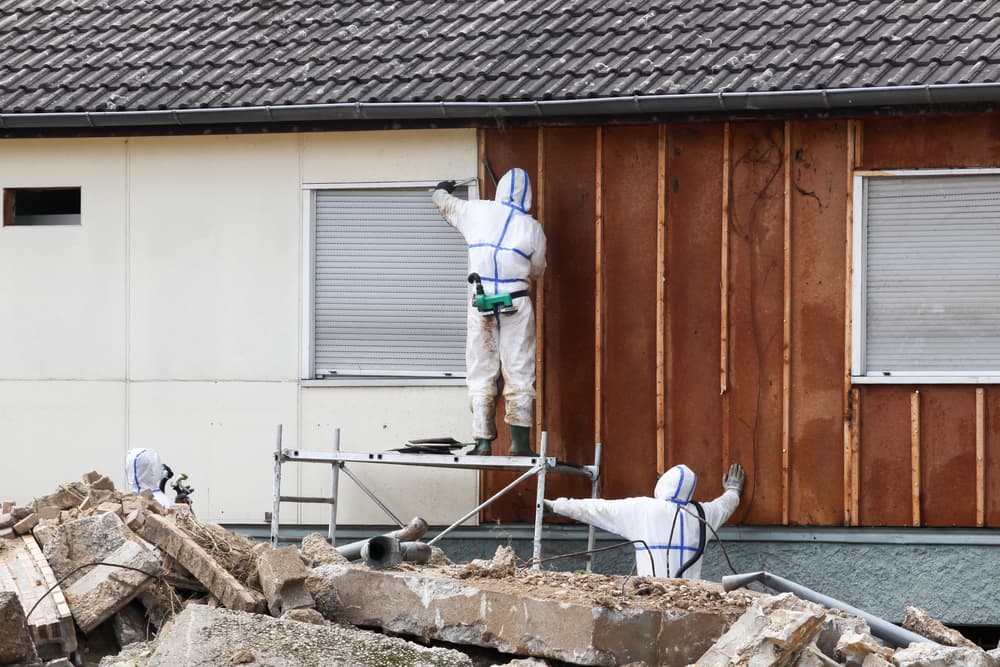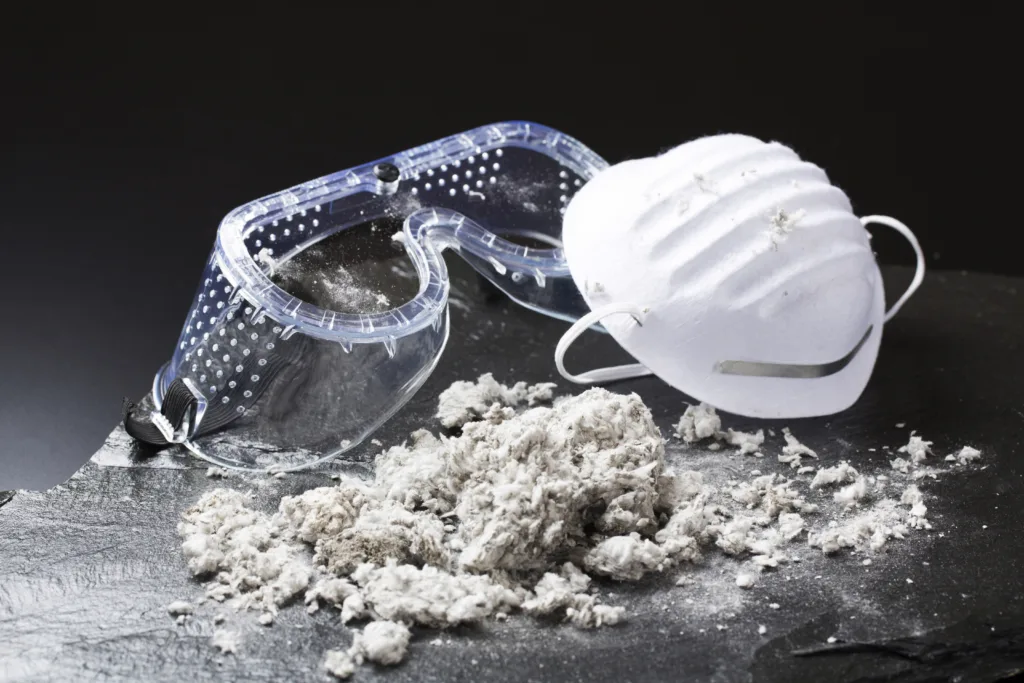From the 1930s to the 1970s, many homes and industrial products contained asbestos. Some homes may still contain asbestos in the flooring, ceiling tiles, or insulation.
Exposure to asbestos puts residents at risk for asbestos-related diseases or aggressive forms of cancer like mesothelioma. If doctors diagnosed you with an asbestos-related illness like mesothelioma, consult a qualified Chicago asbestos attorney to learn more about your potential legal options.
What Is Asbestos?
Naturally found underground in rock and soil deposits, asbestos is a mineral fiber with physical properties like flexibility and resistance to heat that makes it useful in many commercial products.
The mineral’s strength and resistance to heat and chemicals make it great for building construction materials, car brakes, fire retardants, and insulation. But exposure to airborne asbestos caused lethal diseases.

What are the Most Common Places to Find Asbestos?
Until health concerns led to bans on some uses, asbestos was widely used in the United States. The use of asbestos has declined substantially since the early 1970s, but people still come in contact with asbestos. Homes built before 1980 will likely have asbestos-containing products, such as paint, floor tiles, and amphibole-contaminated vermiculite insulation.
Workplace Exposure
Asbestos has found its way into the workplace because of its multifaceted benefits, like insulation and resistance to heat and chemicals. Asbestos was predominately in industrial buildings between the 1940s and 1970s.
In 1977, the Environmental Protection Agency (EPA) declared asbestos a carcinogen, and workers who had direct contact with the material were required to have respiratory protection around the substance.
The mineral was in many workplaces where people might have come into contact with the toxic dust, including:
- Auto mechanics
- Construction workers
- Electricians
- Military personnel and veterans
- Railroad workers
- Steel mill workers
- Carpenters
- Firefights
- Industrial plant workers
- Pipefitters
Household Exposure
The seller of a home does not have to disclose that their home contains asbestos under federal law, which puts potential buyers at risk of exposure. Homes built as late as 2004 may have asbestos contamination.
Common places inside the house that may contain asbestos include:
- Cement flooring
- Insulation and external ventilators
- Loose fill insulation in the roof cavity
- Vinyl floor tiles
- Internal walls and ceilings
- Kitchen splashback
Outside the house, you might find asbestos in:
- Downpipes
- Fence
- Gutters
- Garages
- External wall sheeting
- Insulation for hot water pipes and tanks
Vehicles Contaminated with Asbestos
Imported brake pads and clutches may contain small amounts of asbestos. Mechanics who remove products such as brake disks, drums, and wheels may suffer exposure to toxic, microscopic asbestos dust particles and risk inhaling them.
Exposure in Schools
The mineral was common in insulation, ceiling tiles, pipes, and building materials in schools built before the 1980’s. Asbestos in these structures may become disturbed when school buildings undergo renovations or repairs.
Students, staff, and faculty risk exposure to these airborne fibers when this occurs. Special training is required when maintenance is done in areas containing asbestos to prevent the risk of exposure. Student activities like sports may also disturb damaging material containing the toxin.
While you cannot identify asbestos by sight, you may see small asbestos fibers that look like fuzzy pieces of fraying fabric in damaged materials, such as plastic or cement. However, seeing fibers protruding from a product does not mean it contains asbestos. Only testing can confirm its presence.
Asbestos Exposure: How Can It Happen?
Over time, worn and damaged asbestos-containing products can pose a danger to residents in a home. Anyone in the home may inhale or ingest disturbed, airborne asbestos fibers.
The inhalation of asbestos fibers can cause health problems, and continued exposure increases the number of fibers that become lodged in the lungs and thin lining covering the abdomen, chest, and heart.
Prolonged exposure can lead to inflammation that may develop asbestosis, lung cancer, or mesothelioma. The combination of smoking tobacco and asbestos exposure magnifies the harm.
The Health Effects of Asbestos Exposure
Asbestos exposure increases your risk of developing lung disease. If you were exposed to asbestos while working on a project at home, consult your primary care physician. Your doctor can help monitor signs and symptoms of asbestos-related diseases and cancers like mesothelioma.
X-rays and CT scans are common imaging tests used to monitor and diagnose mesothelioma. Patients may have more treatment options if diagnosed early; however, prevention is the best option to prevent asbestos exposure.
Exposure to asbestos in the home may lead to:
- Asbestosis
- Lung cancer
- Mesothelioma
The more asbestos exposure you have, the greater your health risks. Asbestos-related conditions can be challenging to identify following exposure, and disease symptoms may take years to develop.
If your doctor suspects an asbestos-related health condition, they can diagnose you and refer you to a specialist who treats diseases from asbestos.
Additionally, if your house was built before the 1980s, speak with an asbestos abatement professional and consult a professional before undergoing any repairs or remodeling.
The Dos and Don’ts of Asbestos Safety
Take every precaution if you own an older home. Avoiding damaging older materials. If your home contains asbestos, hire a professional, even if a repair seems minor.
Dos of Approaching Asbestos in the Home:
- Whenever possible, avoid contact with dangerous, asbestos-containing materials.
- Avoid damaging asbestos-containing materials.
- Ask the home inspector and realtor about asbestos in the home before you buy.
- To test, remove, or encapsulate asbestos materials, hire asbestos abatement professionals.
- Consult your home inspector or real estate agent if you suspect your home may have asbestos.
- If you plan on a demolition project, hire trained professionals for asbestos inspections, testing, repairs, or removal.
Don’ts of Approaching Asbestos in the Home:
-
- Never saw, sand, scrape, drill, or disturb asbestos-containing materials.
-
- Never sweep, vacuum, or dust asbestos-containing debris.
-
- Do not collect asbestos-containing materials for testing.
-
- Unless encapsulation is impossible, do not remove asbestos-containing materials.
- Never dispose of asbestos materials with normal household waste.
If you suspect you have asbestos-containing material (ACM) in your home, consult a professional about leaving, removing, or encapsulating it.
The Benefits of Hiring an Asbestos Lawyer
Our experienced asbestosis attorneys want to minimize the disruption to your life and maximize the potential compensation in your case. We’ll take care of each step of the legal process for you so you can focus on your health and family. Learn more about how we can help by calling our office or contacting us online.



